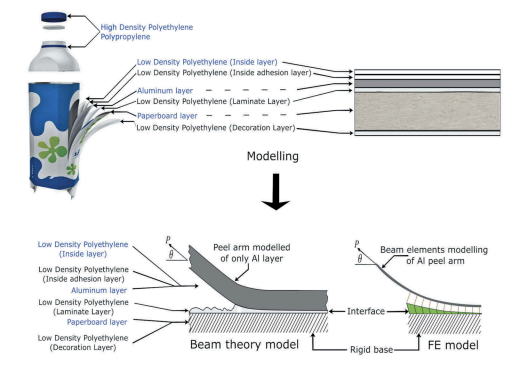
Peeling of metal foil from a compliant substrate
- Post by: Tobias Larsson
- 9th January 2020
- No Comment
Abstract
Large displacement peel was studied for cases where a compliant substrate leads to a large value of the root rotation. An existing simplified beam model to calculate the peel fracture energy was modified to allow for a kinematic hardening beam model of the foil. The steady-state peel force and the root rotation were used as input data to the resulting analytical beam model. Test results from the literature were analysed. A more elaborate finite element model was also studied, using cohesive elements for the interface layer between the foil and the substrate. The cohesive zone parameters used were the fracture energy, the cohesive strength and a shape parameter. An optimization scheme for the cohesive zone parameters was developed and optimized against experimental steady-state peel force and root rotation. The optimization scheme was effective to characterize the cohesive parameters. The method yields similar values of fracture energy for the two peel angles, with the one for 180degree being slightly higher than for 90degree. The difference in fracture energies for different peel angles suggests that the fracture energy can be mode dependent.
Keywords
Peel; laminate, fracture energy, cohesive law, optimization
Citation
M. S. Islam & K. S. Alfredsson (2019): Peeling of metal foil from a compliant
substrate, The Journal of Adhesion, DOI: 10.1080/00218464.2019.1696678
Download
http://urn.kb.se/resolve?urn=urn:nbn:se:bth-19043
